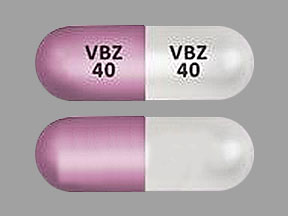Valbenazine and Alcohol/Food Interactions
There is 1 alcohol/food/lifestyle interaction with valbenazine.
Valbenazine Food/Lifestyle
Major Food Interaction
ADJUST DOSE: Coadministration with grapefruit juice may increase the plasma concentration of valbenazine. The mechanism is inhibition of CYP450 3A4-mediated first-metabolism in the gut wall by certain compounds present in grapefruits. The use of valbenazine has been associated with modest prolongation of the QT interval. However, clinically significant QT prolongation may occur in patients taking a strong CYP450 3A4 inhibitor due to increased concentrations of valbenazine and its active metabolite (+)-alfa-dihydrotetrabenazine. In general, the risk of an individual agent or a combination of agents causing ventricular arrhythmia in association with QT prolongation is largely unpredictable but may be increased by certain underlying risk factors such as congenital long QT syndrome, cardiac disease, and electrolyte disturbances (e.g., hypokalemia, hypomagnesemia). The extent of drug-induced QT prolongation is dependent on the particular drugs involved and dosages of the drugs.
MANAGEMENT: Pharmacologic response to valbenazine should be monitored more closely whenever a strong inhibitor of CYP450 3A4 is added to or withdrawn from therapy. Assessment of baseline QT interval and periodic monitoring during therapy may be considered. The manufacturer recommends reducing the dose of valbenazine to 40 mg once daily during concomitant administration with strong CYP450 3A4 inhibitors. Patients should be advised to seek prompt medical attention if they experience symptoms that could indicate the occurrence of torsade de pointes such as dizziness, lightheadedness, fainting, palpitation, irregular heart rhythm, shortness of breath, or syncope. In addition, patients receiving CNS-active agents should be warned of this interaction and advised to avoid or limit consumption of alcohol. Ambulatory patients should be counseled to avoid hazardous activities requiring complete mental alertness and motor coordination until they know how these agents affect them, and to notify their physician if they experience excessive or prolonged CNS effects that interfere with their normal activities.
References (1)
- (2017) "Product Information. Ingrezza (valbenazine)." Neurocrine Biosciences, Inc.
Switch to consumer interaction data
Valbenazine drug interactions
There are 512 drug interactions with valbenazine.
Valbenazine disease interactions
There are 4 disease interactions with valbenazine which include:
More about valbenazine
- valbenazine consumer information
- Check interactions
- Compare alternatives
- Reviews (21)
- Side effects
- Dosage information
- During pregnancy
- Drug class: VMAT2 inhibitors
- Breastfeeding
- En español
Related treatment guides
Drug Interaction Classification
| Highly clinically significant. Avoid combinations; the risk of the interaction outweighs the benefit. | |
| Moderately clinically significant. Usually avoid combinations; use it only under special circumstances. | |
| Minimally clinically significant. Minimize risk; assess risk and consider an alternative drug, take steps to circumvent the interaction risk and/or institute a monitoring plan. | |
| No interaction information available. |
See also:
Further information
Always consult your healthcare provider to ensure the information displayed on this page applies to your personal circumstances.


